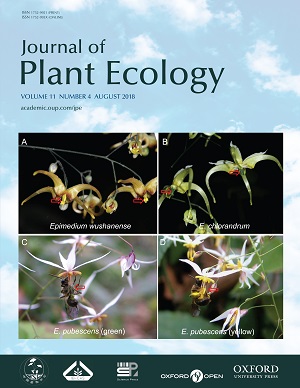Current Issue
-
 Volume 11 Issue 4
Volume 11 Issue 4
Phylogenetic analysis showed transitions from yellow (for example A) to a green (B) androecium or to androecial color dimorphism (C & D) occurring at least seven times in Epimedium. Habitat investigations suggest that yellow morphs tend to appear in relatively high elevation/light density. See Xiao-Yue Wang et al. in this issue.
IF: 3.9
CiteScore: 5.7
CiteScore: 5.7
Editors-in-Chief
Yuanhe Yang
Bernhard Schmid
Yuanhe Yang
Bernhard Schmid
CN 10-1172/Q
ISSN 1752-9921(print)
ISSN 1752-993X(online)
ISSN 1752-9921(print)
ISSN 1752-993X(online)







